1) Antecedents of the Goddess Cult
(2) Prehistoric Female Figurines
(3) Earth Mothers and Mother Goddesses
(4) The Triple Goddess
(5) The Sacred and Divine Feminine
(6) The Goddess Movement
References Cited and Sources Consulted
1. Antecedents of the Goddess Cult
The figure of the goddess can be traced through time and is often found associated with snakes, bulls and birds. The idea of the goddess as mother can be found with the prehistoric ancestors of modern humans. Some 30,000 years ago early religion, which was a feature of human evolution, is a necessary proof that supports the suspicion that early Homo sapiens held certain spiritual beliefs. These primordial goddesses were associated with, and a feature of, the early societies of Mesopotamia, Crete, Egypt, Greece, the Aegean, and southern Europe. There was no single cultural centre in the ancient Mediterranean, even though there did exist an inter-cultural diffusion between the Mediterranean, the Near East, the Aegean, and European lands (Ucko, 1968). Diffusionist concepts became apparent in the 1950’s and 1960’s (Crawford, 1957; Vermeule, 1964) it being asserted that “…one goddess was worshipped universally all over Greece with similar ceremonies, sacrifices and hymns.” (Vermeule, 1964), rituals recognised by visitors from Mesopotamia, Syria, Anatolia, the islands of the Aegean, Hungary and Bulgaria (Meskell, 1995).
The idea of the goddess is that of a divine and sacred female who has supernatural attributes. The goddess is a primordial being who was believed in and worshipped by people and regarded as the source of all life. The notion arose therefore of an omnipotent Mother whose worship symbolised “…a cultural continuity from the Palaeolithic era to modern times.” (Meskell, 1995). Such a goddess, the Mother of All Life, was often worshipped as the principal deity for thousands of years. In English, etymologically, the word goddess is derived from two components – god plus the feminine ess. The term ess is basically the esse borrowed into Middle English from Middle French esse. The word esse came from Late Latin issa, which in turn comes from the Greek feminine suffix issa. In Old English the noun esse replaced icge. The prehistoric religion of the Great, Earth, or Mother Goddess may not mean that women were at all times political or social leaders, but more likely spiritual. The Mother Goddess was seen as symbolically the earth itself. During later periods sculptural representations of the Great Goddess are often shown sitting on thrones, which reinforces the idea that she symbolised the earth, with the primordial goddess possibly representing a mountain. The primordial goddess religion has to be seen as a life-giving principle that was also shrouded in mystery, sacredness, and divinity.
The life of prehistoric peoples, especially during the Neolithic, was dependent upon the earth and animals to provide their food, shelter and clothing. They were dependent on crop and animal fertility for both domestic and wild species. The social unity of the clan and tribe had enormous importance in the struggle for existence and survival. The life of prehistoric peoples was cyclical and, moreover, was not based upon solar but the lunar calendar. This was also reflected in their lives which were controlled by their own receptive and reproductive cycles. Such Mother Centred tribes were obviously matriarchal and did not view nature as a linear process as is thought today. Neolithic cultures according to a popular viewpoint were matriarchal, or at least matrifocal (Hayden, 1986). There is a long tradition of academic and scholarly supposition concerning the widespread prehistoric religion based on the worship of the Mother-Goddess (Malone, 1993). The original existence of a Mediterranean matriculture in the context of social evolution was the product of the works of Lewis Henry Morgan (1818-1881), Frederick Engels (1820-1890), and Johann Jacob Bachofen (1815-1887), which inspired an early debate. Bachofen argued that the earliest human societies had been women-centred and only altered to a patriarchal form before the beginning of history (Hutton, 1999). The postulated matriarchal societies were conceived of as harmonious and peaceful communities in contrast to the aggressive, warlike and patriarchal societies that replaced them (Chapman, 1991; Tringham, 1991).
In addition, within these matriarchal societies “…there were no husbands, yet men fulfilled important roles in construction, crafts and trade. Women’s lives were liberal, socially and sexually and inextricably bound to the rich religious system which ensued their prominence. (Gimbutas, 1992). These women-centred and egalitarian societies were destroyed by the invasion of Indo-European equecentric patriarchal tribes from the Russian steppes. The existence of socially hierarchically organised societies is provided by cemeteries in Eastern Europe (Meskell, 1995), Greece (Humphreys, 1983; Hallett, 1993), ancient Egypt (Robins, 1993); and Mesopotamia (Frymer-Kensky, 1992). There are may ethnographic accounts that attest that cultures with strong female deities survived that still regarded women in non-sacred circumstances as a low status group. Some however still stressed the superiority of assumed matristic cultures in Old Europe, Egypt, Minoan Crete, and Anatolia (Eisler, 1987). Worship of the Olympian deities as preceded by a prehistoric age in which the Great Goddess or Earth Mother had ruled supreme (Hutton, 1999). It was claimed (Gimbutas, 1982; 1989; 1991) that there actually two religious systems; with (1) the matristic gylanic or peaceful goddess centered society and; (2) the androcratic or belligerent patriarchies. The matristic gylanic religious symbols were made apparent according to the goddess’s function such as Life-Giving, Renewal and the Eternal Earth, plus Earth and Regeneration, or Energy and Unfolding.
Catal Huyuk was a large early Neolithic village community in Anatolia from 6000 to 7000 BC, which produced obsidian, pottery, baskets, and raised cattle. The site is associated also with special shrine burials of individuals of high status (Malone, 1993). Numerous excavated female figurines are evidence of a Mother Goddess who headed a pantheon of a matriarchal culture circa 7500 BC (Mellaart, 1967). Where is compelling evidence of an existing altar and temple, circa 7000 BC, as well as clay figurines representing the Great Goddess (Meskell, 1995). In addition symbols of bulls and wall paintings indicate the existence of the cult of Magna Mater existed some 6000 years ago (Sandberg, 1991; Wood, 1996; Leeming, 1994). The central images of the Goddess shows a young woman, a woman giving birth, and an older woman. The goddess images at Catal Huyuk are often shown seated on thrones made of leopards or lions. During the transition from matriarchal to patriarchal , during the transition from Neolithic agrarianism to the Bronze Age, “…the female principle continued to predominate the cultus that had grown up around the mysterious processes of birth and generation.” (James, E. O. 1959).
Figure 1. Seated Goddess from Catal Hayuk
As these felines are often found near to the Goddess it indicates they were sacred to the Goddess herself. Images of the Goddess are seen on shrines, as wall paintings, and as sculptures. Of seeming importance are the figurative birthing images which suggest are a recurring theme and fertility ritual. However, the portrayal of the Goddess accompanied by bulls, horns of rams, and lions, indicates a strong affinity with contemporary societies in Old Europe as well as Minoan and Mycenean civilisations. Sculptures of the goddess figure seated and flanked by lionesses is suggestive of a prototype Cybele (Mellaart, 1960), the leading deity and Mother Goddess of later Anatolian societies.
(2) Prehistoric Female Figurines
Palaeolithic female figurines, some of which are therioanthropic, can logically be assumed part of a wider emphasis on fertility. They were probably part of a ritual that intended, by magical means, to increase animal as well as human fecundity. These artistic representations are believed to be of the Mother Goddess of some 25,000 years ago, which continues until the onset of the metallurgical societies from the Neolithic period (Malone, 1993). Palaeolithic figurines have to be seen within the context of animism in relation to the natural world. The mind-set of the time viewed the world as a living organism that was inextricably interwoven with human life. For hunter-gatherer peoples throughout history and the world shamanism has been found. Both the shaman and the cave or figurine artist were probably the same person, most likely female, during the Late Palaeolithic. For early Homo sapiens art was a powerful means of communication and highly purposive. Painting and sculptures have been found in Palaeolithic caves but do not necessarily merely depict everyday animal life around the artist. Palaeolithic art and figurines are not mundane because they represent an integral component of the ritual and magical life of early humankind. Palaeolithic basic urges wre to express by magico-religious means a deeply felt and developed cultus. The result was the result of migration of the Gravettian culture into former Upper Aurignacion. Therefore, eastern and central Europe received an Asiatic migration at the beginning of the Upper Palaeolithic. The Venus cultus came from the Don Valley, southern Russia, and western Asia. The bone and ivory figurines from eastern and western Asia came, for example, Kostienki, Gagarino, Mezine, and Lake Baikal.
The first prehistoric female figurines were first excavated during the 1890’s and, since World War Two, have been subjected to a range of interpretive scenarios and frameworks (White, 2006), with the initial focus “…phrased in terms of fertility, reproduction and religious power…interpretive emphasis has more recently tilted to questions of gynaecology and obstetrics…women’s status, roles of sexual division of labour, different facets of womanhood, and even women as sexual objects.” (White, 2006; Rice, 1981; Gimbutas, 1989; Duhard, 1993; Soffer, 2000). As archaeological artefacts the female ‘Mother Figures’, known popularly as ‘Venuses’, have been dated across an extensive time scale from various regions, with considerable variability in form, style, decoration and context (Meskell, 1995). The figurines, miniature statuettes made of stone, bone, horn and ivory represented many deities and appeared between 27,000 and 25,000 Bc, with about 300 found between France and central Siberia (Gimbutas, 1991).
Figure 2.

Figure 3.
The ‘Venuses’ from the Upper Palaeolithic are small, carved and usually corpulent figures. Most Palaeolithic figurines are from the Upper Palaeolithic period. The evidence of archaeology is suggestive of a migration of populations into the western hemisphere before the end of the Palaeolithic which extended for 2.5 million years until the Neolithic around 10,000 BCE. One of the earliest know figurines is called the Venus of Dolni Vestonice and dates from the Gravettian Culture of circa 29,000 to 25000 BC. The Venus of Willendorf is a famous example of a Pleistocene figurines from around 20,000 years ago, and is regarded as one of the earliest representations of the first primordial Mother Goddess. The Venus of Willendorf is an 11.1 cm high statuette of Oolitic limestone, which is not local, from Lower Austria. Created between 24,000 and 22,000 she is tinted with red ochre, and not carved to stand alone but perhaps held. These female figurines, in an early analysis, were divided into at least three distinct groups (Murray, 1934). Firstly, the Universal Mother, or Isis type; secondly, The Divine Woman or Ishtar type, and thirdly; a personified yoni or Baubo type. All three types are distinct from each other and were “…derived from a different religion, i.e. psychological, sentiment, and was consequently given a distinctive name as a goddess.” (Murray, 1934). Most early images are of voluptuous and abundantly round female figures. Some rock carved images of females, and the cave paintings, are believed as old as 35,000 years. For example the Venus of Berekat Ram is from the Middle Palaeolithic of the Golan Heights – and if from the Acheulean period it was possibly made by Homo erectus 
Figure 4. Venus of Berekat Ram.
A link between the Palaeolithic statuettes of women and Neolithic figurines was made in 1929, with the notion of a Near Eastern Great Goddess, in order to project the goddess back to the earliest known human activity in Europe (Hornblower, 1929). In prehistoric societies the purpose of the Neolithic figurines is not perfectly understood (White, 2006), and gives rise to questions about our conception of prehistoric peoples. The ungainly and voluptuous form of these figurines predominates among Pleistocene sculptures and their accented sexuality has been interpreted as symbolic of fertility ritual. The Universal Mother the true ‘Mother Goddess’ has several representations (Murray, 1934). Firstly: the full breasted and exaggerated shape shown by the Virgin of Laussel; secondly her portrayal with a child in her arms which suckled or just held as exampled by Isis and Horus; and thirdly as a woman enciente (or pregnant) as shown by the Egyptian goddess Ta-urt. The stress on the maternal organs indicates their nature as amuletic fertility charms with a clear fertility function (Lindsay, 1962; Akkermans, 2003). Figurines from the Neolithic, the farming and agricultural period, show diverse images of the Mother Goddess from circa 10,000 BCE. Representative images occur in all prehistoric cultures with regular seasonal occupations and animal husbandry (Gimbutas, 1982), but essentially “…the predominance of female figurines over male in the earliest levels of all cultures in which they occur in the Ancient Middle East, from the Eastern Mediterranean to the Indus valley, shows that attention at first was concentrated on the feminine aspects of the process of generation. ” (James, 1957).The suggestion also is that these finely made figures and sculptures are for special occasions by mother-figures and priestesses (Gimbutas, 1989). The forms of the Universal Mother are obviously known throughout the ancient world. The very earliest symbols engraved on rocks, bone, or horn “…reflect a profound belief in a life-generating Goddess who represents One Source while pictured in many forms.” (Gimbutas, 1991).
Figure 5
The Neolithic Mother Goddess was crucial in the region of South-West Asia and an example is the clarity of the transition from the earlier mother-cult are the figurines from Tell Arpachiya (Lindsay, 1962), which was a pottery centre of the Ubaid and Halaf Period in ancient Iraq. Universal Mother forms are the only forms that can represent the Mother because they show her as a child-bearing woman (Murray, 1934), because she is the “…protectoress and nourisher of the child, born and unborn, and is therefore equally protectoress and nourisher of all mankind, present and future. In addition all the three forms of ‘goddesses’ are undoubtedly regarded as divine. Neolithic figurines, as those of Tell Arpachiya show, are often associated with serpents, bull heads, doves and double-headed axes and thus “…serve as a link between the Palaeolithic and Bronze Age in the Eastern Mediterranean and in Iran, Baluchistan, the Indus Valley.” (Lindsay, 1962; Akkermans, 2003). Eventually two variations in figurines emerge which in many instances are naturalistic in form but others show a varied posture. Sometimes the goddess or figure is seated which may be indicate an established or accepted sexual division or even have a religious significance.
The case for the Mother Goddess has two essential arguments in support; firstly the characteristic sexual features of the figurines is given obvious emphasis, and secondly: most figurines are female which may stress the importance of fertility. This suggests that exaggerated sexual features may imply figurines have a purpose other than religious. It is in this vein that male figures have to be considered. Are they an exception or can they be considered as representing the parados or companion to the Mother Goddess? Another claim is that because figurines were located in cult sites in cult cities then these cult sites were defined as such by the presence of the figurines. It is thought that in ancient Europe and the Aegean the worship of the Goddess derived from Proto-Indo-European matriarchies of the Neolithic.
The goddess is portrayed symbolically by triangles, lozenges and zig-zags which represents her domain as a Bird Goddess or Snake Goddess. So many symbols indicates that the “…adoration of the Great Mother in fact was a living faith in the entire continent from the earliest times is evidenced not only in the…cult figure but is further supported by…early figurines having painting of red ochre.” (Nagar, 1988). The study of symbols in Palaeolithic art “…demonstrates that the female, rather than the male, was the deity of creation.” (Gimbutas, 1991). The figurines known as the Venus of Willendorf and the Venus of Laussel have traces of red ochre which may represent life (Sandars, 1968).
Figure 6. The Venus of Willendorf.
Again the Bird Goddess is symbolised by chevrons and ‘V’ symbols which are supposedly representative of the pubic triangle. The chevron symbol is found on many bird figurines and are believed to have first occurred during the Seklo Culture of Thessaly around the 7th millennium BC. In the Balkans the early Starcevo and Karanovo cultures of the 6th millennium have similar designs. Some bird decorated vases are decorated with bird-woman hybrids, and images of owls are found in cave paintings. Bird-woman hybrids have been found in some 3000 graves in Malta with the Bird-Goddess having a deposition of 725 bird bones in Orkney. However, the Mother Goddess is associated with numerous other animals but is especially identified with an owl which is termed ornithomorphic. The female symbols and images of birds and snakes also occurs with the earth mother group of figurines, and the stiff-nude group. It seems that the earth-mother group are a continuation of the figurative tradition of the Palaeolithic (Gimbutas, 2001; Ucko, 1968). The owl represents the Goddess as the symbol of death. For example, in Hungary and Lemnos owl shaped burial urns date back to 3000 BC. Upper Palaeolithic mortuary ritual was a life-giving ritual rite connected with female figurines, and the worship of the goddess was always intertwined with the cult of the dead (James, 1959).
Moon symbols as well as of the lunar cycle have been found with snake coils, figurines shaped like owls, and bulls horns and all have been linked to the Goddess. Water flow is an archetypal symbol for the flow of life and thus a Life Giving attribute of the Goddess. Similarly, the zig-zag is possibly the most ancient symbol in human history. It was known to have been used by Neanderthals around 40,000 BC. The zig-zag has been interpreted as symbolising water with which the Goddess has been closely identified as well as with birth. The Venus of Mezin from the Czech Republic is a mixture of Gravettian (upright) and Magdalenian (steatopygous) styles, showing the meander body decoration.
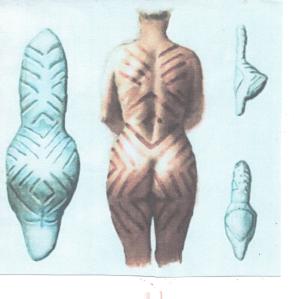 Figure 7. Magdalenian figurines showing meander decoration.
Figure 7. Magdalenian figurines showing meander decoration.
Figurines appear in the archaeological record throughout Europe, mainly in the South-east, South-west Asia, and the Mediterranean area from the Cyclades, Majorca, and Malta (Ehrenberg, 1989; Malone, 1993). Female figurines from the Neolithic and Copper Age Cyclades were first described as a group in the 1880’s but there was no attempt to link them to the goddess (Dent, 1884). From Central Europe to the Near East during the Neolithic period archaeology has previously revealed thousands of anthropomorphic terracotta figurines, nearly all less than six inches high (White, 2006). Balkan figurines, and Greek, were kept inside habitations and hosed in special wall niches (Malone, 1993). In the Karanovo Culture many figurines are forms of the Bird Goddess, others a pregnant goddess, as well as zoomorphic and stiff nude figures. In the Starcevo Culture there also occur ornithomorphic vases dating from circa 5900-5800 BC. The Cucuteni-Trypillian Culture flourished in the region of modern-day Romania, Moldova, and south west Ukraine from 500 to 2750 BC. This culture left behind numerous clay figures some of which represent the Mother Goddess.
Figure 8.
Figure 9.
Many figurines, of apparently female imagery, are found on prehistoric sites in the Levant as well as South-East Europe, and which have ben interpreted as representing a single female goddess (Ucko, 1968). With reference to female figurines they were not necessarily connected to a specific goddess, but with the Babylonian Mother Goddess (Evans, 1895), but later it was believed figurines in Crete were images of a prehistoric Great Goddess (Evans, 1905). From the Palaeolithic onwards the Mother Goddess was the revered deity of peoples over a very wide area.
Figure 10.
Early cults, including that of the Eye Goddess which diffused throughout the Mediterranean, were very different in each prehistoric society. There were domestic cults which were different from cults associated with death and burial. This can be illustrated by the prehistoric archaeology of the islands of Malta, with its many and massive stone temples, around 3500 to 2500 BC. An important part of the temple rituals were the feasting and sacrifices because Maltese society “…may have been a powerful matriarchy dominated by priestesses, female leaders and mother goddesses”. (Malone, 1993). There have been found small and beautifully made and obese figurines that are certainly female. The figurines have been associated, in this Tarxien Culture, with prehistoric death rituals in temple chambers. Moreover, fertility ritual and worship was probably also a component of this prehistoric religion. The prehistoric religion of ancient Malta was not merely restricted to an infatuation with obese and corpulent women. Some 4000 to 3000 years ago the cults in Malta focussed on the use of underground tombs and caves as places of burial. In the final period of the Tarxien Culture society became increasingly dominated by a religious hierarchy “…in which cult specialists or priests controlled much of the industry of the people.” (Malone, 1993).
Venus figurines are carved from soft stone such as calcite, steatite, and limestone, from bone and ivory, as well as formed from clay and fired. Nearly all are of modest size and between 4 cm and 25 cm in height. Attempts have been made to classify the figurines and a useful one is based upon geographical provenance of which there are five subdivisions: the Pyrenees-Aquitaine group including the Venus of Lespugue, of Laussel, and Brassempouey; those of the Italian group including the venus of Savignano and Balzi Rossi; the venuses of the Rhine-Danube inclusing Willendorf, and Dolni Vestonice; and the figurines of the Russian group including Kostienki and Zaraysk and Gagarion in the Ukraine. There are cultural connections between all classifications of the groups. Certain anatomical details suggest a shared oriental origin, followed by western diffusion.
The Venus or Lady of Brassempouy, the Lady in the Hood, from Aquitaine, is a fragmentary figurine made from a tusk or mammoth ivory from the Upper Palaeolithic and about 25,000 years old. The figurine is 3.65 cm tall, has a checkerboard pattern on the head of a mouth-less face, and is one of the earliest known representations of the human face. The head patterning may be a wig, hairstyle or head-dress. From the Middle Aurignacian at Landes.
Figure 12.
The Venus of Dolni Vestonice, Moravia, one of the earliest known depictions of the female form dates from the Gravettian Culture of the Upper Palaeolithic, and ceramic from circa 29,000 to 25,000 BCE.
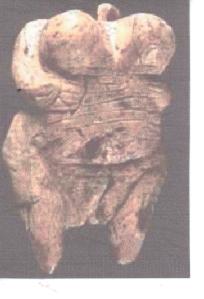 Figure 14. The Venus of Hohle Fels, carved from mammoth ivory, Germany, 40,000 to 35,000 BCE.
Figure 14. The Venus of Hohle Fels, carved from mammoth ivory, Germany, 40,000 to 35,000 BCE.
Figure 15. The Venus of Lespugue, , French Pyrenees, circa 26,000 to 24,000 BCE. This figurines, from the Haute Garonne has large breasts and fused legs.
Figure 16. The Venus of Laussel, Dordogne, France , a limestone relief.
Figure 17. The Venus of Moravany, carved from mammoth ivory, from Slovakia of circa 23,000 BCE.
(3) Earth Mothers and Mother Goddesses
All figurines of the true Mother Goddesses are those where the child is an essential part whether actual or implied. At all times, and in all ancient religions, the Mother-goddess was equally worshipped by men, women, and children “…for the relation of mother and child is universal.” (Murray, 1934). In the prehistoric struggle for existence and survival the role of the Goddess was one of the Rewarding and Eternal Earth. The figurines from Laussel, Dordogne, Lespuges , and Brassempouy, represent the Earth Mother or Fertility Goddess,. From the Ukraine a figure of a pregnant woman was from around 7000 to 6000 BC. With regard to the worship of a prehistoric Great Mother it originated with she “…who gives birth to all creation out of the holy darkness of the womb became a metaphor for nature herself, the cosmic giver and taker of life, ever able to renew herself within the eternal cycle of life, death, and rebirth.” (Gimbutas, 1991). Prehistoric Europe worshipped a Great Earth mother in two aspects, firstly as creatrix and secondly as a destroyer, and became known by a plurality of names at a much later date (Chambers, 1903).
A common feature of many myths is the personification of various deities, of the earth, of elemental forces, as a Mother Goddess, Earth Mother, or Corn Mother (Leach, 1972). Quite often an Earth deity, from who all growing things come, is a chthonic goddess. Mother Nature or Mother Earth is a common personification of nature who focusses on the nurturing and life-giving attributes which are embodied in the form of the mother. The Mountain Mother was the only divinity in ancient Greece known to be of prehistoric origin (Harrison. 1915), and known from a Late Minoan seal dated 1500 BC from Knossos. Prehistoric goddesses were associated with fecundity, fertility and agricultural provision, and worshipped accordingly. The mountain symbolised the earth and as the earth is also the mother because she gave life to man and animals. Hence, images of women representing mother nature and mother-earth are timeless. Discoveries in archaeology have established the existence of a Mountain-Mother cult in ancient Crete (Pearson, 1915), and is evidence of the antiquity of the cult. The earliest examples of the Mountain Mother are of the Minoan Mother, shown in ancient seal impressions, standing on a hill, and flanked by lions (James, 1959), in her role as an earth goddess.
Originally a nature cult, worship of the Mountain Goddess originated in reverence of her fecundity of the earth. As Earth Mother and Great Goddess of the Mountains, she was also Mistress of the Animals who was first worshipped in Crete. Her cult spread to mainland Mycenean Greece. The cult envisage the Mountain Goddess as a Universal Mother who was also the patroness of fertility, the underworld, the seas and of war (James, 1959). In Phrygia the goddess became Cybele. in Ephesus she was Artemis, Anat and Asherah in Syria, and Ma in Comana. Anat, or Anath, was a primitive Semitic and Canaanite war goddess, the Queen of Heaven, the Mistress of the Gods, whose cult also spread to Egypt (Leach, 1972). Identified with Athena during the Hellenistic period, she was also the sister of Baal, as well as having jurisdiction over ritual sacrifices (Benet, 1965). Anat was the Great Goddess of the pantheon in Ugarit and worshiped widely by Canaanites, Amorites, Syrians, Egyptians, Hebrews and Phoenicians. The cult of Anat in Syria and western Asia was also that of Asherah, as Astarte, and Atargatis where they were “…all concerned with maternity, fertility and childbirth.” (James, 1959), around 1400 to 1350 BC. Again evidence suggests all three were originally earth goddesses. In common with Demeter and Kore the goddess Anat, and her consort Baal, were associated with the cult of the corn. The seasonal dramatic ritual was celebrated under the auspices of Asherah and Anat . The goddess Dea Syria, who had many forms as in Mesopotamia, was always the predominant deity who combined sexuality and fertility with belligerence and warlike propensities (James, 1959), in this annual ritual.
The goddess Ma was a local Cappadocian deity and a Phrygian alternative for Cybele. As a warlike goddess she was identified by the Greeks with Enyo and by the Romans with Bellona. In the Hurrian region she was known as Hebat and Shauska, and at Arinne as the Sun Goddess. The Mother of the Mountain was symbolised in Greek temples with the ‘navel of the world’ or omphalos. The omphalos was “…an eminence representing the sacred mountain…” a symbol of earth and birth combined, the “…primordial hill…” that rose out of the chaos waters (James, 1959). Anatolia, in the north-east of Asia Minor was known as the Land of Hatti. There the female deities were associated with the male gods. Anatolian goddesses, such as Heparty or Hebat, were initially Earth-Mothers in a society where a queen succeeded the queen-mother on her death and in so doing became the priestess of the goddess.
The Mother-Goddess is found in many pantheons worldwide as the Goddess of birth, fertility, sexual union, plus the whole complex of birth and growth (Leach, 1972) whether plant, animal or human. With regard to Mother Nature the derivation is natura from the Latin meaning birth or character. Hence Natura became the personification of Mother Nature. The etymology has been traced to ancient Greece. Thus Eorthe in Old English may have been personified as a goddess and the Norse deity was Jord or Earth. However, the earliest reference, circa 13th or 12th century BC, to the Earth Mother was the Mycenaean Greek term ma-ka to ma-ga meaning Mother Gaia. Aspects of the ancient religions of the Inca, the Assyrian, the Babylonian, the Algonquin, the Iroquois, the Slavonic, Greek, Germanic, Roman, Indian, were within the dominion of priestesses in the millennia prior to the superceding patriarchal religions (Leeming, 2009; Merchant, 2001). The idea of the earth personified as a nurturing female is not limited to the Graeco-Roman world.
The Earth Mother is a motif that occurs in many mythologies concerning a goddess that is the fertile Earth and the Mother of all other deities. In India, in the Rig Veda she is called Mahimata. In Hinduism the Mother of All Creation is Gayatvi. Worship of the female principle in India is known as Sakti and its ancient cultus is manifested in one or other of the consorts of Shiva, including Uma, Kali, Parvati, and Durga. The Durga was the Queen Mother and Warrior Goddess who rode tigers into battle. Of Puranic Hindu origin her known period of worship was circa 400 AD but probably earlier. An angry and aggressive aspect of Sakti who fought demons (Jordan, 1992) and as a malignant form of Devi she is represented as a yellow woman riding a tiger (Leach, 1972). The Durga was also a goddess of fertility worshipped in many vegetation cults and a giver of life to the fruits of the earth (James, 1959), but she was also in her chthonic aspect a chief divinity of death as well as identified with Kali and the malignant gama-devata. Kali was also known as ‘the black’ as well as ‘gentle and benevolent’. As fertility deities the furrow in India was called the yoni or vulva and the seeds in it the semen virile.
The Goddess of the Earth in Burma, Cambodia, Laos, Thailand and South East Asia was called Phra Mae Thorami. To the Andean peoples – the Quechua and Aymara – of South America believe in Mother Earth known as Pachamama. The Cult of Pachamama known in Bolivia, Peru, Equador, Chile and Argentina, is derived from Pacha (change, epoch) and Mama meaning mother.
In the ancient cultures of Mexico the Earth Mother is Tonantzin Tlalli meaning Reverend Mother Earth. In Sumer the Earth Goddess is called Ki and is identified with the Lady of the Mountains or Ninhursag. For the Sumerians the earth and fertility Mother Goddess was called Nintu of Lady of Birth. For the ancient Egyptians the primal mother was Mut. The Akkadian Goddess called Kubau had the title Mother of Life, which became the Hurrian goddess Hepa, and thence to the Hebrew goddess Heva or Eve. In the mythology of the Norsemen the earth was personified as Jord and Hlothyn as well as Fjorgyn. The cultures of the Pacific Ocean have many names for the Earth Mother. To the Maoris she is Papatuanuku,. In the Cook Islands the Goddess of the Beginning is Varima-te-takere which means Primordial Mother.
With regard to Mother Worship the Great Mother religions arose early in prehistory with primitive images of her worship found at ancient sites. Various fertility goddesses – the Common Mother, the Great Mother – existed in the Mediterranean and the Near East and have strong resemblances to one another (Leach, 1972). The eastern Mediterranean countries, both north and south were the locale of the worship of the Great Mother. These Great Mothers sometimes had their functions limited whereas others may have had a much wider latitude. For some she may have been the sole deity and some may have claimed a form of Stone Age monotheism for her whom worship was due (Leach, 1972). A worship addressed to her the ‘all-fostering Earth and Mother of the Gods which however does not explain “…the worship of the Mother of the Gods as merely a development from the vague conception of a motherly earth.” (Pearson, 1915). Evidence suggests that the worship of the Great Mother was an old established cult of the Mother of the Gods imported originally from Asia Minor. Moreover, the Great Mother cult belonged to the most ancient level of Greek thought and religion. It was from Crete that her ritual and belief passed to the Greek colonies in Asia Minor, where in the 7th century BC she was assimilated to the cult of Cybele. The Minoan goddess, it is now obvious, came from Phrygia and Anatolia where she became modelled in clay and porcelain, with the origins of her cult going back to the Neolithic circa 3500 BC. Her depictions illustrate her role as Earth-Mother, Mountain Mother, Mistress of the Trees, and lady of the Wild Beasts. The supreme Minoan goddess was Rhea who during the Middle Minoan, circa 2100 to 1700 BC who “…herself emerged as an indivualised figure under Asian influences representing procreative life like Anat, Astarte and Asherah in Syria and the Babylonian Ishtar.” (James, 1959).
Figure 19.
The Great Mother of the Mediterranean was Cybele who influenced and modified the cults of other mother-goddesses in the region – including Ishtar and Aphrodite (Leach, 1972). From the 5th century BC the goddess Rhea became identified with the Great Mother of the Phrygians and thus the mother of the Greek Zeus synonymous with the Mountain Mother of the Phrygians, as the mistress of the swift slaughtering lions (Pearson, 1915). The Mother of the Gods eventually lent away many of her attributes, sacred animals, and other traits to the female goddesses of ancient Greece. To Hera sometimes her lion, and to Artemis and Aphrodite her dove, and to Athena and the Erinyes her snakes, to Demeter her mysteries. (Farnell, 1896). The ancient Egyptian goddess Isis was the counterpart of the Greek Demeter and the Roman Ceres. As local variants or atavistic survivals of the original Mother Goddess of the Mediterranean all three would have been seen as synonymous with bountiful earth (Leach, 1972). It is obvious that the Great Mother had many names including “…Rhea, Cybele, Dindymene, Ma – but her functions remain the same; her characteristic attributes and sacred animals – lion, bull and goat – vary with the culture and local surroundings of her worshippers.” (Farnell, 1896).
The Great Mother Goddess might have been known as the Greek Gaia or the Roman Tellus or Terra. Tellus was a chthonic and primordial Mother and Roman corn deity. Also known as Terra Mater (Jordan, 1992) who was the goddess of marriage, the earth and fertility, and counterpart of the Greek Gaia (Shapiro, 1979). As Goddess of the Earth Tellus was connected with agriculture and the associated festivals and rituals linked her to Ceres, the Roman goddess of grain, agriculture, fertility and mothering (Spaeth, 1996). The goddess Venus was regarded as the mother of the Roman people and her given cult was Venus Genetrix or Venus the Begetter which was included in many manifestations of the syncretised Magna Dea or Great Goddess. In the Classical period Demeter and her daughter were both associated with the earth and primarily corn-goddesses. Demeter was the patron of agriculture and ruled over the processes of vegetation. This shows that the connection intimate connection between the Earth-mother and Corn-goddess remained intact. The cultus of the Corn-maiden and the Corn-mother was interpreted in terms of myth and ritual. The cultus of Ceres the opposite number of Demeter was one where the fecundity of the earth was celebrated in seasonal drams, with Ceres also equated with Tellus Mater (James, 1959). It was Frazer (1914) who extended the Greek myth of Demeter and Persephone to suggest that worshippers all over prehistoric Europe had venerated a double goddess – mother and daughter – who personified the corn.
The archetypal earth mother was a primordial and chthonic deity in the ancient Greek pantheon and considered a Mother Goddess or Great Goddess. An ancient pre-Hellenic goddess mainly revered in Attica, she is the essence and personification of the earth (Jordan, 1992). Her known period of worship was circa 1500 BC until circa 400 AD and her cult centre was at Delphi (Leach, 1972). In Hellenic times she became Da-meter or Demeter. The Gaia or Earth Mother cult was widespread and most powerful at Delphi and Olympia. When emphasis was placed on the sexual aspect of the Mother Goddess Gaia became known as Cybele, Rhea Cybele, Agdistis or Dindymene. It was in Greece that Cybele became identified with Rhea even though she was worshipped in Phrygia and western Asia with orgiastic rituals (Leach, 1972). The question arises why the Cybele of Phrygia and the Rhea of Crete developed along different trajectories from identical substrata of the pre-Hellenic and pre-Phrygian peoples of Crete and Asia Minor (Pearson, 1915). There was an earlier Mother Goddess cult in Crete and Asia Minor, and it was aspects of Cybele’s oriental worship that accompanied her rituals. The Semitic origin of Cybele is attested by her identification with her counterpart Astarte. The cult must have had a very early origin in Asia Minor.
In Mesopotamia and Sumeria the Mother Goddess was known as Ninsun and is Asherah in Canaan and Ashtarte in Syria, but also known in Sumerian erotic poetry as their mother goddess Ninghursag (Leick, 2003). Ninhursaga was the Mother-Goddess known as the Lady of the Land “…where nature manifested its powers of fecundity in the spring in luxuriant vegetation on its lush slopes.” (James, 1966). As goddess of the earth she produced all life (Kramer, 1944), also Ninto ana Kalamma was the ‘Lady who gives birth’, who became Dam-gal-nunna or ‘great spouse of the prince’. who was Enki. Ninhursag was the wife of Enlil the earth god and she gave birth to the god of the moon, Nanna. It was during the 3rd millennium BC that the Earth Goddess assumed a variety of names including Aruru, Nintu, Ninmah, and Ninhursag. Each deity was shown and concerned mainly with maternity and childbirth. The goddess was the prominent deity in Mesopotamia, Anatolia, Syria and the Aegean, but in Egypt the position was reversed. In ancient Mesopotamia Inanna was the Queen of Heaven and goddess of fertility and war, and her known period of worship was circa 3500 BC to 1750 BC, with cult centres at Warka and Nineveh (Jordan, 1992). In local creation myths the Land of Dilmun was a land of paradise. Inanna, the Queen of Heaven and identified with Venus, was a snake goddess and originally a vegetation goddess. She was patron of the vine, of flocks, herds, with an associated snake iconography (James, 1966). Inanna’s prime concern was with the fertility of the earth and, in conjunction with the shepherd-god Dumuzi she was the source of universal life. All life in ancient Mesopotamia was conceived as the result of the union between earth, water and air as the personified goddess (James, 1959). Innana was the Sumerian Queen of the Land and source of the blood of the earth. Also Queen Moon, Great Goddess of the Bronze Age, ruler of stars, planets and rain clouds, accompanied by winged lions. She was the great Sumerian Mother goddess and later identified with the Babylonian Ishtar (Leach, 1972). Indeed, Inanna was the prototype of the Akkadian goddess Ishtar, and engaged in the sacred marriage which was “…celebrated in the city-states to secure fruitfulness to the crops, the people, their flocks and herds and the whole land. (James, 1966).
Figure 22.
Figure 23.
In Mesopotamia it was Ishtar who assumed the role of Mother of the Gods and as such was also the controller of fertility and vegetation and, as such, became identified with Mother-earth. Inanna’s cult of the earth was synchronised with seasonal cycles in both myth and ritual where the goddess as Inanna/Ishtar “…represented the source of all generative power in nature and in mankind as the Universal Mother.” (James, 1959).
In Mesopotamia, Syria, Anatolia, Greece and other locations, the Sacred Tree “…symbolised the generative principle in nature personified in the Mother Goddess called Ninhursaga, Inanna, Ishtar…(James, 1966). However, not so in Egypt where it was the male god as Geb or Ptah, whereas in Mesopotamia it was the goddess who invited the king to share her nuptial couch (Frankfort, 1946). Throughout the ceremonial and ritual process it was the goddess who took the initiative and as the source of life, she “…was regarded as the incarnation of the reproductive forces in nature and the Mother of the gods and of mankind.” (James, 1966). During the long period of the development of agriculture and animal husbandry the productive role of women, with man as the begetter, in western Asia, the Aegean and Crete “…the sacred tree was primarily the embodiment of the goddess, often in association with her young virile partner, husband, son, or paramour” (James, 1966). Therefore, the transition from food gathering to production of food during the Neolithic, the female principle continued to exert its prominence in the feminine cultus. With regard to the female principle and the Tree of Life, the imagery of fecundity, and birth mystery, harks back to the Palaeolithic. Rituals were aided by magico-religious formulations and artefacts which consisted of ivory and bone figurines, corpulent statuettes or amulets. Slender figurines suggest a virgin state rather than the matronly statuettes which represented the two aspects of the female creative role.
The symbolism of the sacred marriage between the goddess and the god, who was her husband/brother was of the goddess as the female principle who precedes. not succeeds, the god. It follows therefore, in Mesopotamia the goddess was the first cause and thus the dominant figure. The ritual and symbolism reached its climax at the seasonal spring sacred marriage, which is represented visually in Akkadian seals. In these seals the Mother-goddess is shown with tree branches, the sacred tree the symbol of the goddess. In ancient Crete, in the Middle Minoan Period (circa 2100 to 1700 BC) due to influences of the ancient Near East, the goddess emerged as “…an individualised, anthropomorphic figure in her three-fold capacity of the Earth-mother…Mountain-mother…chthonic deity.” (James, 1996). Therefore as the Tree of Life she assumed human form as a goddess, the Mistress of the Trees, the Lady of the Wild Beasts and the Guardian of the Dead.
In Egypt creative activities were centred on the male gods, and the goddess had no role in the mystical concepts concerning conception. In this scenario the first cause was Ptah, with Gleb a phoenix on the primordial hill or omphalos, with Tefnut a goddess of moisture, and Isis the sacred ‘throne of the king’ or ‘king’s mother’ and thus personification of the coronation stool. Merely the source of his life-giving functions (James, 1966). The attributes of Isis were those of the harvest goddess Thermouthis, as well as identified with the mother-goddess Hathor, the patron of love and fertility.
Originally Isis did not fulfill the functions of a mother goddess which was the role of Hathor as Cow-Goddess of Denderah (James, 1959). Isis was identified with Hathor eventually and thence with allied goddesses from foreign lands – Silene, Demeter, Aphrodite, and Pelagia – whilst Osiris her husband and brother occupied a subordinate role. Therefore, in early texts Isis was not the queen-mother but creatrix of the pharaohs who were called the ‘sons of Isis’ (Frankfort, 1948). Images of the Mother Goddess are amongst the earliest found in ancient Egypt. There is an association of the goddess with animals such as the lioness, the cow, hippopotamus, white vulture, cobra, the scorpion, and the cat. As a mother goddess she was also associated with the sun, the earth, the night sky and the primordial waters. Reverence for the Mother Goddess continued into historical times such as for Hathor and Isis. Oracles associated with these deities advised the rulers of Egypt, and The Two Ladies who were Wadjet and Nekhbet who remained as patron deities of the Rulers of Egypt in every dynasty.
Hathor which means ‘House of Horus’ was a complex deity who was Great Celestial Cow Goddess, Protectress of Women, Sky Goddess and Matron of Love. Her known period or worship was from the Old Kingdom circa 2700 BC (perhaps earlier) to until the end of Egyptian ancient history circa 400 AD (Jordan, 1992), and her cult centres were at Themes, Dendarah, and Giza. Sometimes identified with Isis and similar in some ways to Aphrodite and goddess of joy, love, and the sun (Shapiro, 1979), as well as representing the female principle, patroness of women and marriage, and also as a moon goddess she was a deity of death (Leach, 1972). The most well known Egyptian goddess was Isis. Daughter of Nut and Geb and sister and wife of Osiris, mother of Horus (Shapiro, 1979), she was sometimes called Aset. Her period of worship was from the Early dynastic period, circa 2700 BC until around 400 AD. The cults of Isis were found wherever there was Egyptian influence (Jordan, 1992). In Graeco-Roman times she was during the Isiac called Stella Maris. Isis was primarily celebrated as the ‘Creatress of Green Things’ and as ‘The Lady of Abundance’ and in her attributes she was “…shown personifying all that was most vital in the maternal principle.” (James, 1966). In her capacity as a maternal goddess she is represented by images with the infant Horus or Harpocrates. Despite not being uniquely a mother goddess Isis can be closely connected, and compared to Inanna, and in due course became equated with the later Magna Mater of Western Asia, as well as established mysteries of her own in 4th century Graeco-Roman times.
Neith was originally a goddess connected to war and hunting as well as the personification of the waters of primordial chaos. Goddess of the night she was a Celestial deity and Creator Goddess and known also as Neit, Net, and Nit. As Goddess of the Sky she had the epithets ‘Coverer of the Sky’, ‘She Who Protects’, ‘Mistress of All’, and ‘She Who Holds a Thousand Souls’ and was the equivalent to the Greek Rhea (James, 1959). The ancient Egyptians stated that every woman was a nutrit or little goddess. The oldest of the Egyptian deities often identified with Ma’at her sacred tree is the acacia.
Figure 25.
Nut was a goddess connected with the underworld as well as the clouds and the heavens, where she appears in the guise of a great cow (James, 1959). Like Neith she stood in the tradition of mother goddesses and was a very ancient deity from the western delta. The cow symbolism links Nut to Hathor and Isis. Daughter of Shu (dryness) and Tefnut (water) she was the mother of Isis, Osiris, Nephthys, and Set ( Shapiro, 1979). Her body is the sky and her husband Geb, the earth. Her known period of worship was circa 3,000 BC and earlier until the end of Egyptian history circa 400 AD. Cult centres were at Karnak, Heliopolis and elsewhere (Jordan, 1992.
Figure 26.
Mut or (Maut), which means mother, was the patron goddess of Thebes and in Upper Egypt the counterpart of Sakhmet (Jordan, 1992) and became the consort of the sun god Amun. As the goddess of womanly arts and motherhood she was depicted as a lioness- or vulture-headed (Shapiro, 1979). Mut had a number of titles that included ‘World Mother’, ‘Eye of Ra’, ‘Queen of the Goddesses’, ‘Lady of Heaven’, ‘Mother of the Gods’, and ‘She Who Gives Birth’.
Astarte was a western Semitic, predominantly Phoenician fertility goddess, and worshipped circa 1500 BC until around 200 BC, and also known as Astarat (in Hebrew), Attart (Ugarit), and Ashtaroth (Jordan, 1992; Leach, 1972). As the Phoenician Great Goddess and Lady of Byblos, she was one of the most ancient forms of the Great Goddess in the Middle East. Possibly an Iron Age (after 1200 BC) incarnation of the Bronze Age (before 1200) Asherah. Astarte was accepted by the Greeks as Aphrodite. Asherah or Aserah is the Semitic name of the Great Goddess with the epithets Sacred Grove, Divine Harlot, Lady of Heaven, Queen of the Gods, the Sacred Cow, the Lady Who Traverses the Sea. Symbolised as a multi-branched tree she was also regarded as she who gives birth to the gods, thus Goddess of the Tree of Life. Regarded as the force of life. Sometimes portrayed riding a sacred lion and holding lilies and snakes. Asherah was a Ugaritic Mother Goddess originally Amorite, then Canaanite and thence Phoenician. Her known period of worship was from prehistoric times circa the third millennium BC to the Christian era. Cult centres were at Ras Shamra in Ugarit, with hill shrines throughout the Mediterranean coastal areas and corn-growing regions.
In Palestine the cult of the Mother Goddess had similar images to those of Asherah and also Astarte. The worship of both Anat and Asherah were deeply established in Palestine, and survived side by side, as did their sacred trees and poles which were original symbols and objects of veneration in their sanctuaries. Despite later legislation and denunciation by Judaism and its patriarchal priesthood the goddess worship was too deeply enshrined to be completely eradicated. Post-exile Judaism was eventually cleansed of its Mesopotamian and Canaanite accretions “…in which the Mother-goddess and her fertility symbolism constitute such a conspicuous feature.” (James, 1959). The basis of several Near East mother goddess cults was derived from that of Inanna-Ishtar, who were two of the three great goddesses of the Bronze Age. One other was Sophia mentioned in the Hebrew Book of Wisdom.
Cybele, similarly to Artemis, was associated as protectoress for bears, lions and panthers. Hecate was identified with Artemis, shared the title Antaea, the Sender of Nocturnal Apparitions, thus the worship “…of the mother was distinguished from the indigenous Greek cults chiefly by its emotional, ecstatic and mystical character.” (Pearson, 1915). Those Greeks who journeyed to Crete found on arrival the worship of the Great Mother of fertility who had the name Rhea. Henceforth her cult was transferred to Greece and was confirmed in areas affected by Cretan influences. Eventually, when her cult worship arrived in Rome in 204 BC Rhea was identified with the Goddess of Plenty or Ops, the mother of Jupiter. In Greek parlance Cybele-Rhea was the mother of Zeus. Cybele, and the primordial Gaia and Rhea were worshipped as Mother Goddesses but Greek Olympian goddesses with Mother attributes also included Hera and Demeter (Burkert, 1979), where each Great Goddess rules over a male society, each shown in her attire as Mistress of the Beasts, Mistress of the Sacrifice. Similarly the Minoan Goddess, represented as a mountain deity on seals, had many of her attributes absorbed into the Greek Artemis.
For the early German tribes they focussed on the Germanic mother goddess called Nerthus who, according to Tacitus, was also known as Terra Mater. Nerthus was worshipped by the Anglii and Longobardi tribes. Later Anglo-Saxons worshipped the Eofan modor, Earth Mother, and folde fra modor or earth, mother of men. In Germanic pagan religion the Earth Goddess was called Nertha. It has been suggested that the Great Mother Goddess had been the main deity of the ancient Celtic peoples, with Glastonbury as a cult centre (Hutton, 1999). Among the Celtic nations the Irish goddess Anu was also known as Danu according to the Da Chich Anann near Killarney. The most honoured of the Irish deities were the Tuatha de Danaan or ‘the people of Danu’. Amongst the early Welsh a similar deity called Don was equated with Danu and identified as a Mother Goddess, referred to in The Mabinogion as the ‘Mother of Heroes’. The Celts in Gaul worshipped a ‘divine mother’ called Dea Matrona who was associated with the Marne River. Similar are the Matrones. The Matres (Latin for mothers) and Matrones (Latin for matrons) were female deities worshipped in North West Europe from the 1st to 5th centuries AD. Always depicted in groups of three they were venerated in Eastern Gaul, the then Germania, Upper Italy and regions occupied by the Roman Empire during that time. (Lindow, 2001; Simek, 2007). Local epithets for these goddesses included ‘Galician Mothers’ and ‘The August Nurses’ or Nutrices Augustae. Hints of the Celtic deities Danu and Don are seen throughout Europe in the names of the Don River, the Danube, Dnestr, and Dnepr, which all suggest they originate with an ancient Proto-Indo-European goddess. In Lithuanian mythology there is Gaia-Zeme of Mother Earth who is the daughter of the sun and moon. In the Americas, in the Andes, there is the worship of the Fertility goddess Pachamamma. In Inca mythology this goddess presides of planting, harvesting, as well as causing earthquakes. In South America and the Caribbean she became the syncretised version of the Yoruba deities Iansan and Oyas. The Hopi of North America, at Turtle Island in Arizona, refer to the earth as Tuuwaqatsi or ‘Earth Mother’. For the Aztec and Toci the ‘Mother of the Gods’ is often associated with Tlazolteotl or Mesoamerican goddess of purification, healing and midwifery. Comparison of the Pueblo cultures of Arizona suggests the worship of the One Goddess, the life giving mother, who existed worldwide before civilisation, and the idea that the first god was a goddess. (Hutton, 1999).
(4) The Triple Goddess
In the ancient classical world the goddesses were “…regarded mainly as patronesses, or allegorical figures, of civilisation.” (Smith, 1984), representing love, maidenly chastity, wisdom and majesty. The Romantic Movement of the 1880’s had an impact on classical studies. Between 1800 and 1940 Aphrodite (Venus) retained her numerical supremacy in appearances with Diana (Artemis) in second place. In third place came Proserpine and 4th was Ceres (Demeter). By the 1810’s the “…divine feminine is personified either in the moon…or the spirit of the green earth…” (Hutton, 1997).
The goddess is often visualised as the triple Goddess in her three aspects of virgin, mother and crone, with her corresponding sacred colours of white, red and black. These three stages of womanhood are mirrored in the phases of the moon – waxing, full and waning. The virgin or maiden new moon represents emerging sexuality, the huntress running with the hounds, wild and free. In this form she is Artemis or Diana, a young woman who belongs to no man. As the mother or full moon, she symbolises feminine power, fertility and nurture. She is the matron at the peak of her fecundity and sexuality as Selene, Demeter, Ishtar, Isis, and Maeve. The crone or waning moon is wisdom and experienced compassion, a guide through the experience of death. In this form she is the hag, the wise woman and keeper of the mysteries. Frequently represented as Hecate she is a triple goddess in her own right and sometimes appears as Kali. All these attributes of the Triple Goddess represent different aspects of healing and growth.
The Triple Deity is common throughout world mythology with many mythical associations. As the goddess associated with the number three she is regarded as the threefold, tripled, triplicate, tripartite, triune, triadic, or as a trinity. The Triple Goddess in mythological art and religious iconography is always represented as a group, as a triad, or perhaps a single deity with three aspects. It was pointed out that the ancient pagan world often believed in a triumverate of three divine women called sometimes the Fates, sometimes the Graces, with the original single earth goddess honoured in three roles of maiden, mother, and crone (Harrison, 1903).
The ancient Greeks spoke of the earth in terms of being female whereas the sky was male in gender. This was in direct contrast to the ancient Egyptians. The gender outlook was reinforced by “…the mind-set of the patriarchal societies which occupied medieval and early modern Europe.” (Hutton, 1997). Trinities of female mythical deities appear in central and east European cultures and suggest evidence of an Indo-European belief in trimutive ‘spinners of destiny’ (Petreska, 2005). The various European female mythological figures and deities show the influence of the pre-Indo-European goddess-worship, or female triple fate divinities and destiny spinners. They are attested all over Europe and Anatolia of the Bronze Age. In classical antiquity there was a sacred grove on the shores of Lake Nemi called Aricia. At this shrine a triple Diana Nemorensis was worshipped from the late 6th century AD (Alfoldi, 1960), and who was conceived as a three-fold unity of the divine huntress, the moon-goddess, and the goddess of the nether-world, Hekate. Another European group usually represented as a trinity are the Matres or Matronae who are associated with fertility and motherhood. Inscriptions as testimony to their worship were found in Gaul, Spain, Italy, Britain and the Rhineland. Their worship was carried on by the Roman army from the 1st century AD.
For the ancient Celts the triple goddess was known as The Morrigan by her three different names of Eriu, Fotla, and Banba. Therefore the goddess of the Irish sovereignty are three sisters (Ellis, 2004; Jones, 1995). This triplicate deity formation reflects a way of “…expressing the divine rather than presentation of specific god types. Triads or triple beings are ubiquitous in Welsh and Irish mythic imagery Green, 1999). Indeed, Morgan la Fay was a manifestation of the British Triple goddess in Sir Gawain and the Green Knight. In addition it is worthwhile noting that the “…religious iconographic repertoire of Gaul and Britain during the Roman period includes a wide range of triple forms: the most common triadic depictions is that of the triple-mother-goddess. (Green, 1999). For some it was believed that the Triple Goddess was an aboriginal deity of ancient Britain (Graves, 1981) and that traces of her worship survived in modern British witchcraft.
For the ancient Greeks the Morai, the Charites, the Erinnyes, and the northern Norns were, as triple deities, aspects of the Greek Hecate or Roman Diana Nemorensis . Thus the “…Three-faced Selene…” is “…identified as the three Charites, the three Morai, three Erinnyes.” (Green, 1996). The goddess Hecate is synonymous “…with Persephone, Selene, Artemis, and the old Babylonian Ereshkigal, is one of the deities most involved in the papyri.” (Betz, 1989). The hymns and spells in the texts of the magical papyri of the Greeks refer to the goddess as Hecate, Persephone and Selene etc, as “…triple-sounding, triple-headed, triple-voiced…triple-pointed, triple-faced, triple-necked (Betz, 1989). The Triple Goddess has become identified, in mythology, with the Greek moon-goddesses. Artemis is the Maiden the virgin goddess of the hunt. Selene was the Mother, and mother also so of Endymion’s children. Hecate was the crone, associated with the underworld and magic, as Queen of the Witches. The goddess in her early form took the gods of the successive waxing and waning years as he lovers in sequence. Robert Graves (1969) thought that the ancient worship of the Goddess underpinned most of classical Greek myth, but which survived in a distorted or incomplete form. For example, triad survival was seen in the worship of Hera in three forms as Hera Pais (girl Hera); Hera Teleia (adult Hera); and Hera Khera (widowed Hera).
The Triple Goddess concept is assumed to have started with the works of Jane Ellen Harrison (Meskell, 1995; Harrison, 1903, 1912). A key figure in the ‘Myth and Ritual School’ at Cambridge which is now considered somewhat passé and the “…reason the Ritualists have fallen into disfavour is not that their assertions have been controverted by new information…Ritualism has been swept way not by an access of new facts but of new theories.” (Ackerman, 2002). Writing of Harrison’s work Hutton (1997) wrote she was “…both celebrated and controversial, posited the previous existence of a peaceful and intensely creative woman-centred civilisation, in which humans, living in harmony with nature and their own emotions, worshipped a single female deity. The deity was regarded as representing the earth, and as having three aspects, of which the first two were Maiden and Mother, she did not name the third…Following her work, the idea of a matristic early Europe which had venerated such a deity was developed in books by amateur scholars such as Robert Briffault’s The Mothers (1927) and Robert Graves’s The White Goddess (1946; 1981).”
Marija Gimbutas put forward the argument for the existence of a Triple-Goddess reverence during the European Neolithic. This goddess- centred religion was initially modified by wave-like and sequential invasions of agricultural Indo-European patriarchalists. Therefore the egalitarian and matristic Neolithic communities, which had a matriarchal and gynaeocratic social organisation, were eventually overwhelmed (Gimbutas, 1991). The main theory of Marija Gimbutas was that a goddess centred culture existed among pre-Indo-European peoples of Old Europe between 6500 and 3500 BC (Gimbutas, 1974; 1999). The theory was adopted by modern New Age and feminist groups (Gilchrist, 1999). The theory argued that in Old Europe, the Aegean, as well as in the Near East, a Great Triple Goddess was worshipped and which pre-dated the patriarchal religion brought in by the invading Indo-European speakers. Furthermore, the contemporary Palaeolithic and Neolithic iconography provided evidence of Triple Goddess Worship.
Robert Graves took the idea of Goddess worshipping matriarchal early Europe from Harrison (Greer, 2003; Hutton, 1997) for the imagery of the three aspects related to the triple goddess. As for Harrison herself she had proclaimed tha “…Europe itself had been the location of an idyllic, goddess-worshipping, matriarchal civilisation just before the beginning of recorded history, and spoke bitterly of the disastrous consequences of the Indo-European invasion that destroyed it. In the hands of later writers such as Robert Graves, Jacquetta Hawkes, and Marija Gimbutas, this ‘lost civilisation of the Goddess’ came to play the same sort of role in many modern Pagan communities as Atlantis and Lemuria did in theosophy.” (Greer, 2003). In The Greek Myths (1969, vols 1 and 2) Robert Graves applied his convictions of the White Goddess to Greek mythology and thus various theories concerning goddess worship in ancient Greece (Van Hendry, 2002). Graves posited that Greece had been settled by a matriarchal goddess-worshipping people before invasion by successive waves of patriarchal Indo-European speakers from the north.
It is in the writings of Robert Graves (1979; 1981) that the Triple Goddess is conceived as one of the primary deities especially by neo-pagans. Notwithstanding, separate from the Neo-pagans, the Triple-Goddess refers to historical triads of goddesses and also single goddesses worshipped in three aspects or forms. In the usual Neo-pagan worship the three-fold female figures, after Graves, as the Maiden, Mother, and Crone. Each phase of sacred womanhood is seen as separate but also sequential stages of the female life-cycle as phases of the moon. The realm of the earth, the underworld and heavens are thus ruled by a goddess phase. In this mythology the Horae were equated with the seasons, the Graces with the Fates, and the three seasons comprised the Greek year (Harrison, 1903; 1912), the matriarchal goddess herself reflecting the three stages of a woman’s life.
(5) The Sacred and the Divine Feminine
Images or figurines of the Universal Goddess of the Ishtar type (Murray, 1934) are different from the Mother-type and resemble each other only in their common femininity. These figures are always of young presumably nubile women. Sometimes they are naked, sometimes lightly clothed, and sometimes fully clothed. A feature of divine female images or figurines is that there is no emphasis or exaggeration of sexual characteristics. It is in this sense that they cannot be called A Mother-goddess because they have never born children.
The sacred feminine with regard to figurines of the personified yoni type have exaggerated genitalia as an essential (Murray, 1934). Their beauty of form is sacrificed with the main emphasis on their pudenda. The most realistic yoni figures in the ancient world come from Egypt and represent the goddess Baubo. She is a western Semitic Mother goddess from Syria who was known from Prene and found associated with Cybele and Atagartis (Jordan, 1992). The surviving artefacts from the Palaeolithic and Neolithic periods represent “…numerous expressions of the divine female which persisted for many thousands of years.” (Gimbutas, 1991). The Mother Goddess, as the Mother of Mysteries, was venerated as the sacred womb of the earth and held in high esteem.
The Palaeolithic and Neolithic may have seen the beginnings of gender devotion, of the exhaltation of the feminine principle, and creation of homo-social art. The figurines have led to conjectures that there were once societies where women were known as the sole progenitors. Therefore the concept of the Feminine Principle elevated to the reverential position of Creatrix of Life. The Mother as life producer became the central figure as the personification of fertility, and therefore the divine principal of maternity. As such she presided over the mystery of birth and generation. As the Mother her role child-bearing an offspring nourishment became “…the primary model for the development of the image of the goddess as the all-generating deity (Gimbutas, 1991). Therefore worship of the divine femininity or fertility was became entwined with a Mother Goddess cult must be one of the oldest and longest surviving religions of the ancient world (James, 1959), with the goddess personifying “…the eternally renewing cycle of life in all its forms and manifestations.” (Gimbutas, 1991). Indeed, it was the thesis of Briffault that most of the world’s peoples had “…once venerated a Mother Goddess who was believed to have engendered all life, and who was commonly associated with a young god who was her son and consort.” (Hutton, 1999).
With the development of animal husbandry and the domestication of flocks and herds, the role of men in the process of reproduction became more obvious, and thence “…the mother-goddess was assigned a male partner, either in the form of her son and lover, or of brother and husband.” (James, 1959). Nonetheless in Mesopotamia it was till the goddess who invited the lover or young god to hare her bed, it was she who enfolded her consort as the young god, and she who throughout the ritual who took command took the initiative. It is unlikely at this period that the young god played any part in the antecedents of cult of the mother goddess and celebration of the maternal principle. where her cult became very prominent. When the maternal principle and idea of the divine feminine had become personified it “…was either as a single goddess, the Great Mother, with different functions and symbols, or a number of independent and separate deities exercising their several roles in the processes of birth, generation and fertility, in whom the cult was centred.” (James, 1959).
In ancient Greece the Mysteries of the Goddess all centred on the Mother and her subordinate son. The mysteries meant magic and stood in contrast to the worship to the worship of the Olympian father (Harrison, 1915). In the ancient religion of Crete the male deity was sometimes a child, sometimes a young man, sometimes a background power who fertilised the Mother Earth or the always dominant Mother. Marriage was for ancient society the mystery par excellence. There was a mystical communion between the Goddess and her putative lover which was enacted as a ritual across the whole of the East. This mattered not whether it was the sacred marriage of Cybele and Attis, Aphrodite and Adonis, or Isis and Osiris (Pearson, 1915). The worship of the Mother centred on fertility and was group participation rather than by a single individual worshipper. Greek religion comprised two levels or strata. This was reflected in the existence of Mother cults and Father cults that characterised Greek religion. The Mother Goddess was dominant in the southern Aegean and Anatolian stratum, whereas the northern, Indo-European derived, had a dominant Father god derived from the patrilineal social conditions. A feature of the southern stratum matrilineal group worship was that it was mystical and orgiastic. From this it can be seen that the mysteries of the Mother are based – as with all religious mysteries – based on ceremonies of initiation or rites of passage. For example the Greek Demeter and her younger self as Kore show the “…mysteries are now known to be simple magical ceremonies, dramatic representations of birth, marriage, and death, enacted with a view to promote fertility.” (Harrrison, 1915). The matrilineal worship of the Mother Goddess implies that she has a succession of consorts. For example, in Crete, the fructifying of the Mother was mimetic and dramatic and sometimes attended by castration in some cults in Asia Minor (Frazer, 1907). The sacred marriage was common to all myths where the lover was symbolically done to death after the ceremony and then restored to life. The mystical marriage may well have been “…in its origin a magical process intended to stimulate the reproductive forces of nature, while the subsequent death and resurrection of the priest-king represented the annual decay and revival of vegetation.” (Pearson, 1915; Murray, 1912).
(6). The Goddess Movement
Some Neo-pagans assert that worship that worship of the Mother Goddess or Triple Goddess can be traced back to pre-Christian Europe. Indeed, as far back as the Upper Palaeolithic, and as such in todays terms is a surviving remnant of original and primeval beliefs. This is the archetypal theory of the Neo-pagans. Many Neo-pagans are not Wiccans therefore theology, beliefs and practices will vary (Adler, 2006). Many Wiccans and Neo-pagans worship the Triple Goddess in the belief that the Triple Goddess represents the archetypal figure who appears in a number of different cultures throughout human history. There are many individual goddesses combining to form a triple goddess. In the Neo-pagan and Wiccan view sexuality, pregnancy followed by breast-feeding of the neonate, are all part of the female reproductive processes. Processes that embody the Goddess and thereby make the physical body sacred.
The theology of the Neo-pagans has adopted an eclectic of images and names from culturally divergent deities for their ritual purposes (Rountree, 2004). This explains the connection between the Triple Goddess to the three goddesses Saraswati, Lakshmi and Parvati (Kali/Durga) of the Hindu triple Tridevi. In theological terms is goddess spirituality monotheistic or polytheistic? The words The Goddess or Great Goddess suggest a monotheism but are really shorthand terms to encompass all goddesses or henotheism, which describes the modern metaphoric concept of the female deity (Long, 1996; Laura, 1997; Christ, 1997; 2003). The concept of a singular divine being having numerous expressions was not a new development. A major theme in India for many centuries was the Vedas speaking of a one-goddess-many-goddess concept (Jayran, 2000). Theological – aspects of the deity in earlier goddess worship concerns an underling theme – not syncretism or henotheism, but the realisation of a unity behind a multiplicity of manifestations. For example, in ancient Mesopotamia, Egypt and the Mediterranean lands records show the goddess speaking for herself as being known by many names and forms. This is as much true for Inanna of Sumer as it is of Isis of Egypt. Also, is the Goddess immanent or transcendant, or both? It is believed that the Goddess is immanent and infuse all of nature (Starhawk, 1979), but when transcendant the Goddess exists independently of the material world.
Figure 27.
In the 19th century first-wave feminists, Matilda Jocylin Gage and Elizabeth Cady Stanton, published their ideas about a female deity. Anthropologists such as Bachofen examined the ideas concerning prehistoric matriarchal Goddess cultures. The concept of prehistoric matriarchy was introduced in 1861 by J. J. Bachofen (1922) who stated “…the struggle of matriarchy against other forms is revealed in diverse phenomena, the underlying principle of development is clear. Matriarchy is followed by patriarchy and preceded by unregulated hetaerism.” Bachofen’s central postulate was historical patriarchies were recent replacements of the earlier state of primeval matriarchy, and a chthonic maternal prehistoric religion. For Bachofen chthonic mystery cults of matriarchal societies were stages in the historical development of religion.
A goddess is regarded as an aspect of the Great Goddess as well as an individual goddess possessing a specific or particular role within the pantheon. The Goddess or Great Goddess is therefore the female deity regarded as primary – even the powers of the male god are derived from her (Gottner-Abenderoth, 1987). The concept of the Great Goddess is not identical in all cultures. It is nonetheless a common concept in many ancient cultures which the Goddess Movement wants to restore (Christ, 1997), where Goddess Spirituality is synonymous for the Goddess Movement and spiritual practice. Matriarchal religion is one that focuses on a goddess or goddesses and refers to the theories of prehistoric matriarchal religions proposed by J. J. Bachofen, J. E. Harrison, and M. Gimbutas, and later popularised by Second-Wave Feminism ( Diner, 1965; Harding, 1935).
The Goddess Movement was inspired by the writings of Gimbutas (1974; 1989) and Mellaart (1967). For Marija Gimbutas the concept of Old Europe meant the existence of Neolithic societies that were ‘matristic’ and ‘goddess-centred’, with a female deity having three aspects. This concept inspired some Neo-pagan worshippers of the Triple Goddess. In the 1970’s and 1980’s these Neolithic cultures were referred to as matriarchies, and became the vehicle whereby the field of matriarchal studies was introduced to feminism (Gottner-Abenderoth, 1987). The underlying theory was the transformation of prehistoric cultures in which the local goddess was primary and the male god had only derivative powers. These prehistoric cultures were assumed to be egalitarian and possessed a social organisation that operated matrilinearity, and thus inheritance only through the maternal line (Lerner, 1987; Eisler, 1987; Gimbutas, 1989; Christ, 1997; Dashu, 2000).
Marija Gimbutas was the pioneer of the Goddess Movement, and it was her writings that initiated the field now described as archaeomythology. In essence – a fusion of archaeology, folklore and comparative mythology. The works of Gimbutas were regarded as the key to the meaning of prehistoric research but, she was criticised for “…the technique of arguing back from her theory to the meaning of artifacts, so that anything fits her case…the imputation of religious significance to any artefact that resembles an organism.” (Linnekin, 1998). Therefore as Gimbutas argued for the worship of the Triple Goddess in Europe she attracted much controversy. However, her ideas did influence modern neo-paganism. There is no dispute that the triple Goddess was known in ancient religion. Further criticism of Gimbutas was that she allegedly twisted facts and reinterpreted them to fit her feminist agenda, thus “…she has shown to her own satisfaction the contrast between the ‘peaceful character of…Old Europe’ and that of the society which destroyed it.” (Tringham, 1991).
The overall trend of the Goddess Movement were the religious and spiritual beliefs and practices that emerged out of Second-Wave Feminism during the 1970’s. Some women embraced the concept of the female goddess more in keeping with feminist ideas abut the inherent value of women. Goddess beliefs occur in many forms. Multiple goddesses are recognised by some believers, and some include gods. Since the 1970’s goddess spirituality has emerged as a bona-fide and recognisable international cultural movement. Second-Wave feminism took up the ideas originally postulated by Bachofen and Robert Graves. Merlin Stone (1978) took Palaeolithic ‘Venus’ figurines as evidence of a prehistoric matriarchal religion, and presented matriarchal religion as involving a “…cult of serpents” as a major symbol of spiritual wisdom, fertility, life and strength. It was Marija Gimbutas who introduced the field of feminist archaeology in the 1970’s with her now standard works for the teory that a patriarchic or ‘androcentric’ culture originated in the Bronze Age and replaced a Neolithic goddess-centred world view (Husain, 1997).
It follows that Gimbutas influenced branches of Neo-paganism in the 1970’s. Matriarchal religion became part of a contemporary new religious movement within the larger arena of Neo-paganism, and which became known as the Goddess Movement. Thus it was Marija Gimbutas, in hindsight, who “…unwittingly supplied the fledgling movement with a history, through her analysis of the symbolism of the goddess in the religion of the Palaeolithic and Neolithic Old Europe.” (Christ, 2002).
Witchcraft has no mythology or ancient history but has nonetheless, resurrected a number of archetypes, myths and pagan deities – most importantly the Great Goddess. Modern witchcraft is presented as the antithesis of the popular misconceptions and ideas of sorcery and Satanism. A deliberate distinction is made between evil black magic and the pagan revival religion of the Goddess Movement. The central myth of witchcraft is the myth of rebirth. This encompasses the descent of the goddess into the underworld. In other words a variation of the descent myths of Demeter, Kore and Persephone, Inanna and Dumuzi, Ishtar and Tammuz. Modern witches try to reflect these myths in their ritual practices.
Wicca views The Goddess together with her male consort the Horned God as the primary deity of importance. For Wicca she is the witch community’s tribal goddess, but is not universal or omnipotent. There are many variants of Wicca who regard the goddess as universal, which is in line with her description in the Charge of the Goddess. In this respect she is the Queen of Heaven similar to Isis. Her strong symbolism is often made apparent and is derived from a number of ancient deities and cultures. Sometimes portrayed as Diana, Hecate, Isis, sometimes as Maiden, Mother, and Crone or Hag. These three aspects are often regarded as the three stages in the life of the woman – separated by menarche and menopause. Within the Goddess Movement some participants, but not all, self-identify as witches, whereas others use ‘pagan’ as a generic label for their spiritual world view (Laura, 2002).
Wiccans and Goddess Movement participants often invoke ancient myths, which are used metaphorically and figuratively, rather than given a literal interpretation. In this way myths are seen as reflecting ancient understanding and view of the world. Similarly, creation myths are seen as poetic or metaphoric statements rather than in conflict with scientific understanding (Budapest, 1980; Laura, 1989, 1997; Starhawk, 1979). Myths from ancient cultures included their goddesses with those of post-Bronze Age Greek and Roman mythology which had developed a patriarchal bias. An example is the myth of Demeter and Persephone which has been classically reinterpreted (Christ, 1987; Pollack, 1997; Spretnak, 1978).
The myth of the goddess plays a central role in all ceremonies of initiation in witchcraft. These initiations, in common with Masonic rituals, have three degrees. An initiate of the First Degree participates in a symbolic ‘death of the old self’ and a ritual ‘rebirth’ as a witch. This ‘rite of passage’ for the ‘child of the goddess’ means the initiate enters the magic circle, and thereby symbolically enters the ‘Craft’. These practices of witchcraft seek to find again the transcendence of the divine feminine. They attempt this by reconstructing pagan fertility rites and the mysteries of the Goddess. Witchcraft participants regard the rituals as a affirmation of corporeal sacredness, a connection or communion of humans to nature, he cycle of life and death, and thence rebirth.
A central ritual of witchcraft is called Drawing Down the Moon. This ritual ceremony is where the High Priest invokes the force of the Goddess to enter the High Priestess. She then draws the Goddess into herself, and thus becomes the conduit for her divine energy. The origin of the ritual is allegedly derived from the Thessalian witches who were renowned for their magical powers. The Charge of the Goddess is the nearest that the ‘Craft’ can approach to a ‘litany’. The history of The Charge has ancient precedents in The Golden Ass of Apulieus (1996). The Charge of Goddess, formulated in the modern version in the 1950’s (Vlaiente, 1989), is an inspirational and traditional libational text used in Neo-pagan Wiccan religious ceremonies. It is spoken by the High Priestess after the ritual of Drawing Down the Moon. (Rabinowicz, 2004). Several versions exist, all with the same basic premise, the best known version being that of Gerald Gardner (Orpheus, 2009).
The Charge of the Goddess is recited during Wiccan rituals where the High Priestess is expected to become the representative or become the receptacle of the Goddess within the Sacred Circle. The opening paragraph names a collection of goddesses, some derived from Greek and Roman mythology. Others are cited from Celtic and Arthurian chronicles, affirming belief that these various figures represent a single Great Mother. The Charge affirms as well that all acts of love and pleasure are sacred to the Goddess thus “let my worship be within the heart that rejoices, for behold, all acts of love and pleasure are my ritual. Therefore, let there be beauty and strength, power and compassion, honour and humility, mirth and reverence within you.” (Valiente, 1989).
Figure 27.
The religious ‘holidays’ of witchcraft are called sabbats and are based on pagan seasonal and agrarian festivals. There are 4 major and 4 minor sabbats. The greater or major sabbats are: Imbolc (Imbolg or Oimelc) on February 2nd; Beltane on the 30th of April; Lughnasadh (also Lammas_ on August 1st; and Samhain on October 31st. Lesser or minor sabbats are equinoxes and solstices to mark the change of seasons. Ostara is on March 21st and Midsummer on June 21st. Mabon occurs on September and December 21st, which is Yule. The majority of rituals reflect the witches ‘Wheel of the Year’ so therefore rituals will vary according to the coven and its traditions. Imbolc is Christianised as Candlemass, and Beltane features Midsummer morris dancing, with ‘corn-dollies’ appearing at Lughnasadh.
The Dianic worshippers adopted the concept of the Triple Goddess from ideas of Robert Graves and certain Wiccan elements. Named after the Roman goddess Diana who was the Goddess of the Witches in Charles Leland’s book of 1889 called Aradia (Barrett, 2004). Dianic Wiccans us the Triple Goddess in their ritual ceremonies. The Dianic witches believe in a witch-cult hypothesis, and attempt to trace the historical origins of their beliefs to the pre-Christian rituals of the Neolithic. Such a set of beliefs is a distillation of a primal religion at the beginning of all cultures. The Dianics , who became apparent in the 1970’s, for example regard earlier midwives and wise-women as the first witches. Witches point to the Legend of Aradia, in which Diana sends Aradia to Earth to instruct witches in their magical ways. It was Gerald Gardner who drew upon Leland’s Aradia or Gospel of the Witches (Orpheus, 2000), for the Origins of the Wiccan Charge of the Goddess in the late 1940’s. With reference to the Goddess and magic, or the art of casting spells, witches look to the Goddess for power and blessing. Magical powers are drawn from the Goddess when she is in her lunar aspect, implying magical powers wax and wane with the phases of the moon. At each phase an appropriate aspect of the Goddess is invoked for a spell. For example an invocation or petition to Aphrodite for a love spell, or to Panacea for a healing spell.
The Goddess is not a personified independent deity who acts wilfully upon the world but a primordial feminine principle who is prehistoric in origin and who had a “…constant presence throughout the Palaeolithic and Neolithic eras.” (Biaggi, 2008). The feminine aspect of the duotheistic (or ditheistic) theology of Wicca is shown sometimes as the Triple Goddess, her masculine counterpart being the Horned God. However, the Goddess predates God (or gods) by tens of thousands of years. The concept of the Triple Goddess, the Great Goddess, the Earth Mother, the Mountain Goddess shows a power and personality that flowed through the early history of Homo sapiens, humankind (Biaggi, 2008). In the form of the Triple Goddess, as Maiden, Mother and Crone, she was a modern extrapolation by Robert Graves from 19th and 20th century scholars, especially Jane Harrison, Margaret Murray, James Frazer, and members of the Cambridge University Ritualists, as well as Alistair Crowley. (Hutton, 1999). The Triple Goddess concept (1948) was the contribution of Robert Graves to modern paganism (Hutton, 1997).
The Mother Goddess was the personification of birth, reproduction, fertility, and the transformation of motherhood, as well as of death (Biaggi, 2008), and the prehistoric proof has been found in rock shelters and caves, grave sites and camps. The image of the goddess as moon is part of an assemblage of symbols that developed during the 20th century. Robert Graves posited in The White Goddess in 1948 the iconographic concept of an ancient universal European goddess. Evidence of her worship has been found world-wide with countless figurines, from world mythology, as well as cultural and anthropological analogy. Using imagery from Jane Harrison’s waxing, full, and waning moon Graves represented them as a three-form and tri-phasic goddess. It became apparent the two features of the White Goddess are especially relevant – it is an authentic work of history and an accurate portrait of the Old Religion (Hutton, 1999).
References Cited and Sources Consulted
Ackerman, R. (2002). The Myth and Ritual School. Routledge, London.
Adler, M. (1979). Drawing Down the Moon. Penguin, Harmondsworth.
Akkermans, P. & Swartz, G. (2003). The Archaeology of Syria. CUP.
Alfoldi, A. (1960). Diana Nemorensis. American Journal of Archaeology.
Apulius. (1996). The Golden Ass, Book II. Chapter 47. Wordsworth Classics.
Bachofen, J. J. (1922). Myth, Religion, and Mother Right. Princeton. UP
Barratt, R. (2004). The Dianic Wiccan Tradition. http://www.witchvox.com
Bernard, E. & Moon, B. (2000). Goddesses Who Rule. OUP, Oxford.
Benet, W. R. (1973). The Reader’s Encyclopaedia, 2nd edition. London.
Berger, P. (1985). The Goddess Obscured. Beacon Press, Boston, Mass.
Betz, H. D. (1989). The Greek Magical Papyri in Translation. University of Chicago Press.
Biaggi, C. (2008). www.goddessmound.com
Bonnano, A. (ed). (1986). Archaeology and Fertility cult in the Mediterranean. 17-41. Amsterdam.
Budapest, Z. (1980). The Holy Book of Women’s Mysteries. Susan Anthony Books.
Burkert, W. (1972). Homo Necans.
Campbell, J. (1982). Primitive Mythology. Penguin, Harmondsworth.
Campbell, J. (1982). Occidental Mythology. Penguin, Harmondsworth.
Campbell, J. (1982). Oriental Mythology. Penguin, Harmondsworth.
Chambers, E. K. (1903). The Medieval Stage. Oxford.
Childe, V. G. (1925; 1927; 1957; 1961). The Dawn of European Civilisation. Routledge, London.
Childe, V. G. (1935). The Prehistory of Scotland. Kegan Paul, London.
Childe, V. G. (1940). Prehistoric Communities of the British Isles. Chambers, London.
Childe, V. G. (1951). Social Evolution. Watts, London.
Childe, V. G. (1954; 1960). What Happened in History. Penguin, Harmondsworth.
Childe, V. G. (1958). The Prehistory of European Society. Penguin, Harmondsworth
Christ, C. P. (1987). The Laughter of Aphrodite. Harper & Row.
Christ, C. P. (1997). Rebirth of the Goddess. Ashton-Wesley.
Christ, C. P. (2002). Feminist theology as post-traditional theology. In: Parson, S. F.
Christ, C. P. (2003). She Who Changes. Palgrave Macmillan.
Coleman, J. A. (2007). The Dictionary of Mythology. Arcturus Publishing Ltd, London.
Cotterell, A. (ed). (1999). Encyclopaedia of World Mythology. Paragon, Bath.
Crawford, O. G. S. (1957). The Eye Goddess. Phoenix House, London.
Dalley, S. (1989). Myths from Mesopotamia. OUP, Oxford.
Dames, M. (1976). The Silbury Treasure: the Great Goddess rediscovered. T&H, London.
Daniel, G. (1958). The megalith builders of Western Europe. Hutchinson, London.
Dashu, M. (2000). Knocking Down Straw Dolls. Online.
Davidson, H. R. (1964). Gods and Myths of Northern Europe. Penguin, Harmondsworth.
Dent, T. (1884). Researches among the Cyclades. Journal of Hellenic Studies. (5).
Diner, H. (1965). Mothers and Amazons. Julian Press.
Duhard, J. P. (1993). Upper Palaeolithic figures as a reflection of human morphology and social organisation. Antiquity, 67. 254-263.
Ehrenberg, M. (1989). Women in prehistory. British Museum, London.
Eisler, R. (1987). The Chalice and the Blade.re. Harper Row, San Francisco.
Eller, C. (2006). The Myth of Matriarchal Prehistory. Beacon Press, Boston.
Ellis, P. B. (2004). The Celts. Carroll & Graf.
Encyclopaedia of Ancient Myths and Culture. (2003). Eagle Editions, Herts.
Evans, Sir A. (1895). Cretan pictographs and prae-Phoenician script. Quaritch, London.
Evans, Sir A. (1901). The Neolithic Settlement in Knossos. Man, (1), 184-6.
Evans, Sir, A. (1921). The Palace of Minos. Macmillan, London.
Farnell, L. R. (1896). The Cults of the Greek States. Oxford.
Frazer, Sir J. G. (1909). Adonis, Attis, Osiris. Macmillan, London.
Frazer, J. G. (1914). Spirits of the Corn and of the Wild. London.
Frymer-Kensky, T. (1992). In the wake of the goddess. Ballantine, New York.
Gazm-Swartz, A. & Holtorf, C. (1999). Archaeology and Folklore. Routledge.
Gerhard, E. (1849). Uber Metroen und Gotter-Mutter. Berlin.
Gero & Conkey. eds. (1991). Engendering Archaeology: Women in Prehistory. Blackwell, Oxford.
Gilchrist, R. (1999). Gender and Archaeology: Contesting the Past. Routledge, London.
Gimbutas, M. (1956). The Prehistory of Eastern Europe. Peabody Museum, Cambridge.
Gimbutas, M. (1982; 1974). The Gods and Goddesses of Old Europe. T& H. London.
Gimbutas, M. (1989). The Language of the Goddess. Harper Collins.
Gimbutas, M. (1991). The Civilisation of the Goddess. Harpers, New York.
Gimbutas, M. (1999). The Living Goddess. University of California Press.
Gimbutas, M. (2001). The Living Goddess. Thames & Hudson, London.
Giorgio, J. F. del. (2006). The Oldest Europeans. A. J. Place.
Goodison, L. & Morris, C. (eds). (1998). Ancient Goddesses. British Museum, London.
Goodrich, N. L. (1989). Priestesses. Franklin Watts, New York.
Gottner-Abenderoth, H. (1987). Matriarchal Mythology in Former Times and Today. Crossing Press.
Graves, R. (ed). New Larousse Encyclopaedia of Mythology. Hamlyn, London.
Graves, R. (1979). The Greek Myths, vol 1. Penguin, Harmondsworth.
Graves, R. (1979). The Greek Myths, vol 2. Penguin, Harmondsworth.
Graves, R. (1981). The White Goddess. Faber & Faber, London.
Green, M. (1996). The Celtic World. Routledge.
Green, M. (1999). Back to the Future: Resonances of the Past. In: Gazm-Swartz, A.
Greer, J. M. (2003). The New Encyclopaedia of the Occult. Llewellyn.
Hallett, J. P. (1993). Feminist Theory, historical periods. In: Rabinowicz & Richlin.
Harding, M. E. (1935). Women’s Mysteries. Longman Green and Co.
Harrison, J. E. (1903. Prolegomena to the Study of Greek religion. CUP, Cambridge.
Harrison, J. E. (1912). Themis: A Study of the Origins of Greek Religion. CUP, Cambridge.
Hastings, ed. (1908-1927). Encyclopaedia of Religion and Ethics. vols 1-12. Scribner, USA
Hawkes, J. (1945). Early Britain. Collins, London.
Hawkes, J. (1951). A Land. Cresset, London.
Hawkes, J. (1963). UNESCO History of Mankind. New York.
Hawkes, J. (1968). Dawn of the Gods. Chatto & Windus.
Hayden, B. (1986). Old Europe: sacred matriarchy or complimentary opposition? In: Bonnano, A. (ed).
Hornblower, G. D. (1929). Predynastic figures of women and their successors. Journal of Egyptian Archaeology. 15 (30-35).
Humphreys, S. C. (1983). The family women and death: comparative studies. Routledge, London.
Husain, S. (1997). The Palaeolithic and Neolithic Ages. In: The Goddess: Power, Sexuality, and the Feminine Divine. U of Micigan Press.
Hutton, R. (1997). The Neolithic Great Goddess. Antiquity. March.
Hutton, R. (1999). Triumph of the Moon. OUP, Oxford.
James, E. O. (1957). Prehistoric Religion. Thames & Hudson, London.
James, E. O. (1959). The cult of the Mother Goddess. T&H, London.
Jayran, S. (2000). Presentation at Goddess Studies Colloquium. Bristol.
Jones, P. & Pennick, N. (1995). A History of Pagan Europe. Routledge.
Jordan, M. (1992). Encyclopaedia of Gods. Kyle and Cathie Ltd, London.
Kramer, N. S. (1944). Sumerian Mythology. Philadelphia.
Lang, A. (1995). Myth, Ritual & Religion, vol 1. Senate books, London.
Lang, A. (1995). Myth, Ritual & Religion, vol 2. Senate Books, London.
Laura, J. (1997). Goddess Spirituality for the 21st Century. RTF Open Sea.
Leach, M. (ed). (1972). Standard Dictionary of Folklore, Mythology and Legend. Funk & Wagnall, New York.
Leeming, D. & Page, J. (1994). Goddess: Myths of the Female Divine. OUP.
Leeming, D. (2005). The Oxford Companion to World Mythology. OUP, New York.
Leick, G. (2003). Sex, Love and Eroticism in Mesopotamian Literature. Routledge, London.
Lempriere, J. (1994). Classical Dictionary. Bracken Books, London.
Lerner, G. (1987). The Creation of Patriarchy. OUP, Oxford.
Leroi-Gourhan, A. (1968). The Art of Prehistoric Man in Europe. Thames & Hudson, London.
Lindow, J. (2001). Norse Mythology. OUP, Oxford.
Linnekin, J. (1998). The Great Goddess: Theory and Goddess revival. In: Women and Religion. Univ. of Connecticut.
Long, A. P. (1993). In A Chariot Drawn by Lions. Crossing Press.
McGrath, S. (1997). The Sun Goddess. Blandford, London.
McKillop, J. (1998). Dictionary of Celtic Mythology. OPU, Oxford.
Malone, C. A. et al. (1993). The death cults of prehistoric Malta. Scientific American. December.
Marringer, J. (1960). The gods of prehistoric man. Weidenfeld & Nicholson, London.
Massingham, H. J. (1965). World without end. Cobden Sanderson.
Massingham, H. J. (1943). The tree of life. Chapman Hall, London.
Mellaart, J. (1965). Earliest civilisations of the Near East. T&H, London.
Mellaart, J. (1967). Catal Hayuk. McGraw-Hill.
Mellaart, J. (1976). The Neolithic of the Near East. Macmillan, London.
Meskell, L. (1995). Goddesses, Gimbutas and ‘New Age’ archaeology. Antiquity, 69 (74-86).
Murray, A. (1988). Who’s Who in Mythology. Bonanza Books, London.
Murray, G. (1912). Four Stages of Greek Religion. New York.
Murray, M. (1934). Female Fertility Figures. J. Roy. Anth. Inst. LXVI (1).
Nagar, S. K. (1988). The Universal Mother. Atma Ram & Son, Dehli.
Neumann, E. (1991). The Great Mother. Princeton University Press.
O’Rahilly, T. F. (1946). Early Irish Mythology. Dublin.
Orpheus, R. (2000). Gerald Gardner and Ordo Templi Orientis. Pentacle Magazine. (30).
Parsons, S. F. ed. (2002). The Cambridge Companion to Feminist Theology. CUP.
Pearson, J. L. (2002). Shamanism and the Ancient Mind. Altmira, NY.
Petreska, V. (2005). Demons of Fate in Macedonian Folk Belief.
Piggott, S. (1949). British Prehistory. OUP, Oxford.
Piggott, S. (1954). The Neolithic Cultures of the British Isles. CUP, Cambridge.
Piggott, S. (1965). Ancient Europe. Edinburgh University Press.
Pollack, R. (1997). The Body of the Goddess. Element.
Price, S. & Kearns, E. (2003). The Oxford Dictionary of Classical Myth and Religion. OUP.
Rabinowicz, N. S. & Richlin, A. (eds). (1993). Feminist Theory and the Classics. Routledge, New York.
Rice, P. (1981). Prehistoric Venuses: Symbols of Motherhood or Womanhood? Journal of Anthropological Research, 37. 402-414.
Robins, G. (1993). Women in ancient Egypt. British Museum, London.
Rothery, G. C. (1995). The Amazons. Senate books, London.
Rountree, K. (2004). Embracing the Witch and the Goddess. Routledge, London.
Ruether, R. (1975). New Woman, new Earth. Seabury, New York.
Sandberg, A. (1991). The Cult of Magna Mater.
Shapiro, M. S. & Hendricks, R. A. (1981). A Dictionary of Mythologies. Granada, London.
Simek, R. (1984). Dictionary of Northern Mythology. D. S. Brewer.
Smith, E. (1984). Dictionary of Classical Reference in English Poetry.
Soffer, O. et al. (2000). The “Venus” figurines: Textiles, basketry, gender and status in the Upper Palaeolithic. Current Anthropology, 41. 511-537.
Spaeth, B. S. (1996). The Roman Goddess Ceres. University of Texas Press.
Spence, L. (1994). Introduction to Mythology. Senate Books, London.
Spretnak, C. (1978). Lost Goddesses of Ancient Greece. Beacon.
Starhawk. (1979). The Spiral Dance. Harper.
Stone, M. (1978). When God was a Woman. Houghton Mifflin, Harcourt. USA.
Talalay, L. E. (1987). Rethinking the function of clay figurine legs from Neolithic Greece. American Journal of Archaeology. 91.
Tringham, R. (1991). Household Faces. In: Gero & Conkey,
Ucko, P. J. (1962). The interpretation of prehistoric anthropomorphic figurines. Journal of the Royal Anthropological Institute. 92 (38-54).
Ucko, P. J. (1968). Anthropomorphic figures of predynastic Egypt and Neolithic Crete with comparative material from the prehistoric Near East and Mainland Greece. Andrew Szmidia, London.
Valiente, D. (1989). The Charge of the Goddess. Hexagon Publications.
Van Hendry, A. (2002). The Modern Construction of Myth. University of Indiana Press.
Van Leuven, J. (1991). Review of Gimbutas. Journal of Prehistoric religion. 7 (83-4).
Vermeule, E. (1964). Greece in the Bronze Age. University of Chicago Press.
Wood, J. (1996). The Concept of the Goddess. Routledge.

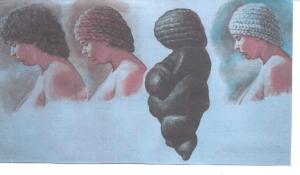

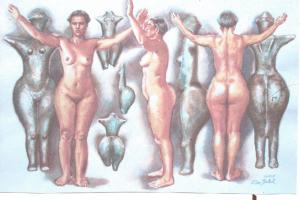
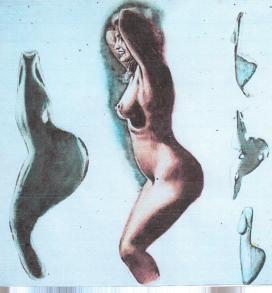
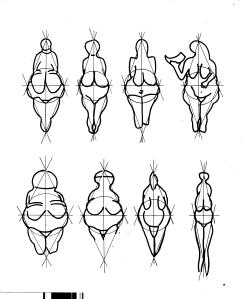

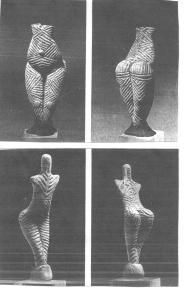
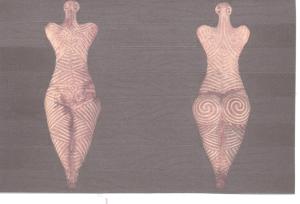
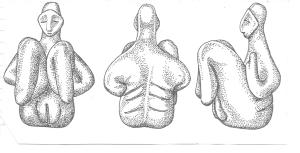
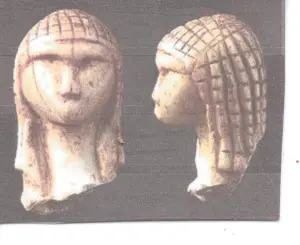
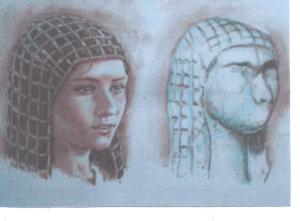
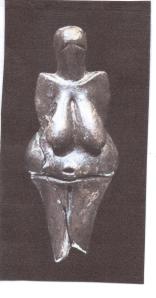


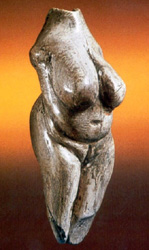

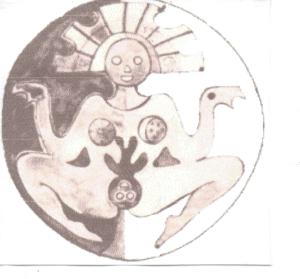
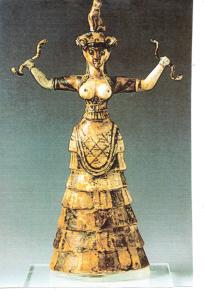

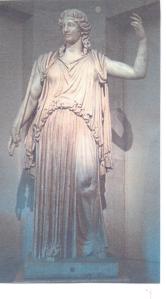



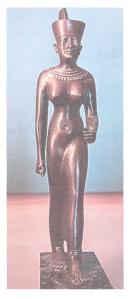
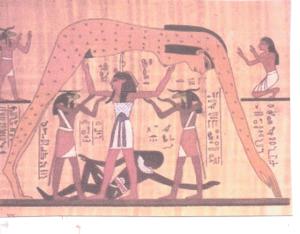
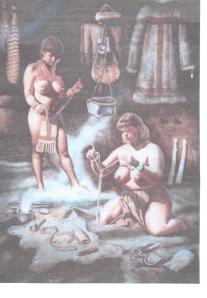

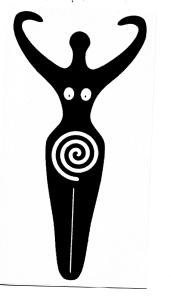

Very well done! You skipped over Karl Jung, however, and may wish to check out his PSYCHOLOGY OF THE UNCONSCIOUS, 1916, 1949, especially pgs. 200-201, Chpt. 5 “SYMBOLISM OF THE MOTHER AND OF REBIRTH”, and pg 452: “Wisdom dwells in the depths, the wisdom of the mother: being one with it, insight is obtained into the meaning of deeper things, into the deposits of primitive times, the strata of which have been preserved in the soul”. You may, also, wish to view our website: gravettianvenusfigurines.com. Gregg.
Many thanks for this excellent article, which I enjoyed reading. And an extra thank you for naming the sources; I highly appreciate that.
Pingback: Mma 1976 Pharo Figurine Marks | Xtreme MMA Training
Pingback: Mma 1976 Pharo Figurine Definition | Xtreme MMA Training
Pingback: FabArt: Spotlight, Torey Akers - Fabulously Feminist : Fabulously Feminist
You actually make it appear so easy along with your presentation but I in finding this matter to be actually one thing which I believe I would by no means understand. It seems too complicated and very large for me. I’m looking ahead on your next put up, I will attempt to get the cling of it!
Pingback: The Rise of a Goddess, a Sacrificial Lamb, and a Hermaphroditic Cyborg? – The Conscious Spore
Pingback: Archive: Spotlight// Torey Akers – Akiko Surai
Pingback: God or gods. The Foundation of Religion - The Explanation
Sis, you got it all wrong. There is no evidence of a mother goddess(es). Paleo- and Neolithic are very very different. You are guilty of adding feminist/mystic hyperbole. Not science.
Some commenters event want to see Jung (a psycho mystic) in there. There is no psychoanalyis. There is only neuroscience.
I give you a D for effort on all the nice and random pictures you stole from other aercho sites.
I’ve written two books (very rare and self-published) on my collection of Ice-age Upper-palaeolithic Venus figurines, spear throwers, numerous lithic pieces, etc. The over 400 known Venus figurines found so far are ALL female. Not a single male, which leaves you and me out, pal. Read Marija Gimbutas, and go to donsmaps.com for a fairly complete listing, though not including my 8, as Don is a bigger a**hole than yourself. One of mine is being dated this week by photoluminescence dating at the U of Wash. and may be one of the oldest known fired clay objects yet found. The oldest known to date is the Venus of Dolni Vestonice’, but I’m sure you already knew that (!). Look before you leap. It will save you from scuffing your knees. I’m displaying my figurines at the local Pagan Pride get-together here in Madison, WI this Sat. You’re welcome to attend if you’re in the hood.
Had you read the site notification you may have realised that the author of this work (my father) passed away in July 2017. Whilst CONSTRUCTIVE criticism is welcome in the hope it help other readers, please take into consideration that Eric W. Edwards can no longer reply to such disrepectful comments. Thank You. Owen P Edwards (site monitor/builder).
Reblogged this on Die Goldene Landschaft.
It’s crazy how quick men are to throw away the possibility that women were leaders once. We already know they held positions of power in times where women’s rights were declining. You say it’s more likely that it was just spiritual, when really it’s more likely that women did hold those positions. I mean historians couldn’t even admit that the venus figurines were religious they tried so hard to make it sound like they were prehistoric porn. Thought the first calendar found on a cave wall was written by a man. Just assumed, until a woman asked why would a man need to know how long a month is. Everything is just assumed to be male until proven otherwise, it’s frustrating.